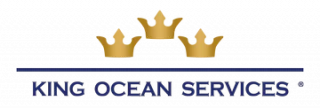Why Financial Sustainability Matters for MATs
Multi-academy trusts (MATs) are groups of schools operating under a unified governance and legal structure within the UK’s Department for Education (DFE).
They strive to improve education outcomes through collaboration, resource sharing like GAG pooling, and expertise pooling to create economies of scale.
However, like any organization, MATs face significant financial challenges.
Rising operational costs, dependency on government funding, and the complexities of managing multiple schools create a fragile financial ecosystem.
According to the 2024 National School Trust Survey, 83% of respondents plan to make the main focus of the next academic year balancing budgets.
Not far behind, 73% plan to focus on cost reduction and 56% say they will focus on income generation and diversification.
Ensuring financial sustainability is critical for MATs to achieve their educational aims.
Without it, MATs risk compromising the quality of education and the long-term viability of their schools.
The Pillars of Financial Stability in Multi-Academy Trusts
Financial stability in MATs rests on several key pillars:
Access to Diverse Funding Sources to Mitigate Reliance on Unpredictable Government Grants
Government funding forms the backbone of most MAT budgets, but relying solely on this source creates financial vulnerability.
Reductions in education sector funding or changes in government policies can swiftly destabilize even the most well-managed trusts.
To counter this risk, MATs must diversify their income streams.
One effective approach is to apply for targeted grants outside of government funding.
Educational charities, philanthropic organizations, and community funds often support projects that align with their missions.
For instance, grants can finance new facilities, purchase technology, or run extracurricular programs that benefit students.
Another potential income stream is through commercial ventures. MATs can rent individual school facilities like sports halls and auditoriums to local community groups, clubs, or event organizers.
Even parking spaces or unused land could generate additional revenue under the right conditions.
Establishing relationships with alumni also brings long-term benefits.
Alumni networks can become a source of voluntary donations through periodic giving campaigns or larger capital contributions for specific projects.
Building strong connections with graduates ensures a lasting relationship—and a potential revenue stream—for years to come.
Efficient Use of Resources to Maximize the Value of Each Pound Spent
MATs are tasked with making their budgets stretch as far as possible without sacrificing the quality of education.
Adopting cost-effective practices ensures MATs extract maximum value from every expenditure.
Centralizing administrative services across schools within the trust is an excellent way to cut costs.
A shared services model—where tasks like finance, HR, and payroll are handled jointly—reduces redundancies and creates uniformity to reduce staff costs and make operations smoother and more cost-efficient.
Implementing bulk procurement practices also has great potential to reduce operational expenses.
Trust leaders can negotiate better prices with suppliers by purchasing items such as stationery, IT equipment, or cleaning supplies in larger quantities.
Energy efficiency is another increasingly important cost-saving measure.
Transitioning to renewable energy sources like solar panels or implementing efficiency upgrades, such as LED lighting, reduces energy costs and demonstrates a commitment to sustainability, enhancing the trust’s reputation within the community.
Well-Planned Financial Reserves to Weather Periods of Financial Uncertainty
CFOs will ensure you have adequate reserves.
They act as a financial buffer, enabling trusts to handle unexpected expenses or shortfalls in funding.
Whether it’s an urgent building repair, a sudden cost increase, a temporary enrollment decline, or issues with student retention rates, financial reserves ensure continuity of operations without compromising educational quality.
These reserves also allow MATs to invest in strategic projects when opportunities arise.
For instance, a trust with solid reserves can act quickly to acquire a property for expansion or fund a new educational initiative that aligns with its long-term goals.
However, planning for reserves requires regular review.
A “one-size-fits-all” approach doesn’t work; each MAT should evaluate its size, risk profile, and future ambitions to determine the appropriate level of reserves.
MAT leaders must balance having enough reserves to safeguard the trust while avoiding over-saving, which could detract from current educational investments.
Strategic Collaboration and Partnerships to Unlock Value Beyond Basic Funding
MATs can access additional funding, resources, expertise, and funding to support their operations by collaborating with local businesses, universities, community organizations, and industry partners.
Business partnerships often lead to win-win scenarios.
For example, a local company might co-sponsor a vocational training program or an apprenticeship scheme for students.
This benefits the trust financially and enriches its educational offerings for school improvement.
Community collaborations also provide significant gains.
Partnering with local councils or nonprofits can result in shared facilities, such as sports complexes or libraries, which reduce overhead expenses.
These partnerships can strengthen relationships with parents and the wider community, fostering greater support and potential fundraising opportunities.
Universities, too, offer valuable collaborative possibilities.
By working alongside higher education institutions, MATs can co-develop programs, access academic resources, or pursue joint grants.
This boosts a trust’s financial position and enhances the quality of education provided, particularly for older students preparing for higher education.
Financial sustainability isn’t just about managing budgets—it’s about thinking strategically, finding innovative solutions, and preparing for future challenges.
MATs that combine smart financial management with a vision for long-term growth can secure both stability and exceptional educational outcomes for generations to come.
Creating a Financially Resilient MAT Structure
Resilience begins with strong financial structures. MATs must establish centralized financial management systems, allowing consistency across all their schools.
Utilizing shared services like HR, finance, and IT can improve efficiency.
Developing multi-year strategic plans also ensures goals align with financial realities, enabling MATs to plan for future risks.
Collaborative governance across schools also plays a crucial role, ensuring accountability and transparency while steering collective decisions.
Revenue Reserves: A Buffer for Uncertain Times
Revenue reserves act as a safety net for MATs, providing security against unexpected expenses or funding reductions.
These reserves ensure educational operations continue without disruption, even during financial shocks.
Maintaining adequately sized reserves reflects sound financial planning while offering MATs the flexibility to fund expansion or innovative projects.
Optimizing Procurement for Cost-Effective Operations
Cost-effective resource management is vital for building a financially sustainable trust.
MATs can optimize their procurement strategies through:

Bulk Purchasing: Pooling resources across schools yields better negotiation power with suppliers.
Energy Efficiency: Upgrading lighting, installing solar panels, or implementing energy-saving practices can significantly cut utility costs.
Shared Services Models: Centralizing administrative tasks such as IT, HR, and payroll can reduce overhead expenses to relieve cost pressures, since providers can handle all the schools. It prevents support staff from being redundant or spread too thin.
Maximizing Funding Opportunities and Income Streams
Revenue forecasting and diversification is key to financial sustainability.
Depending solely on government grants is risky, but MATs can counter this by exploring alternative income channels:

Grant Funding: Apply for grants from private foundations, nonprofits, or government programs.
This can be great if you’re looking for funding to cover something specific, as many grants are earmarked for certain purposes.
But there are also lots of general grant opportunities available, too.
Facility Rentals: Renting out school sports halls or auditoriums during off-hours can generate passive income.
Alumni Donations: Building strong relationships with alumni can lead to valuable contributions.
Past students are much more likely to donate to the MAT if you stay in touch with them after graduation and offer alumni events.
Effective Budgeting and Financial Planning in Education
Budgeting for MATs requires foresight and robust planning.
Creating detailed financial plans with clear short-term and long-term goals enables efficient allocation of resources.
Monthly financial reviews against benchmarks and other metrics can also help identify overspending or inefficiencies before they escalate.
Professional development for school leaders in financial planning ensures that every team member understands and supports the trust’s fiscal priorities.
Leveraging Technology for Financial Oversight and Control
Digital tools can revolutionize how MATs manage finances.
Modern financial software allows:

Real-Time Monitoring: Track spending in real-time to nip inefficiencies in the bud.
Data-Driven Decision Making: Pull analytics from budgeting software to inform fiscal strategies.
Collaborative Governance: Cloud-based systems allow board members and financial leaders to access reports remotely, improving oversight.
MATs investing in the right technology are often better prepared to manage complex financial landscapes.
Building Partnerships to Support Long-Term Financial Goals
External partnerships can unlock additional resources and funding opportunities for MATs.
Collaborations with local businesses, community organizations, or universities can bring donations, grants, or shared program costs.
Industry partnerships can provide students with internships, vocational training programs, and other valuable learning experiences.
Case Studies: Success Stories in MAT Financial Sustainability
Several MATs exemplify financial sustainability through innovation and foresight:
Ark Schools: By leveraging shared services and securing philanthropic contributions through corporate partnerships, Ark broadened its resource base while maintaining cost efficiency.
Harris Federation: A pioneer in grant funding and strategic income diversification, this MAT successfully strengthened its financial position while funding cutting-edge projects, such as its music education program and Climate Emergency Challenge.
Outwood Grange: Efficient resource sharing and a centralized finance system have helped the trust reduce administrative costs and redirect savings to enhance students’ education. Students now train in a new hospital wing and have access to a new IT suite due to solid reinvestments.
These examples show that the path to financial sustainability is achievable with the right strategy, innovation, and collaboration.
Final Thoughts
Financial health and stability is not just about balancing the books—it’s about ensuring that MATs have the resources to deliver exceptional education today and in the future.
By implementing the right strategies—optimizing procurement, diversifying income streams, maintaining revenue reserves, and leveraging technology—MATs can secure a sustainable future.
For financial leaders looking to make impactful changes, start by fostering transparency across your organization, training your teams in key financial skills, and monitoring performance with cutting-edge tools.
Together, these actions ensure that MATs continue to thrive while empowering the next generation of learners.




